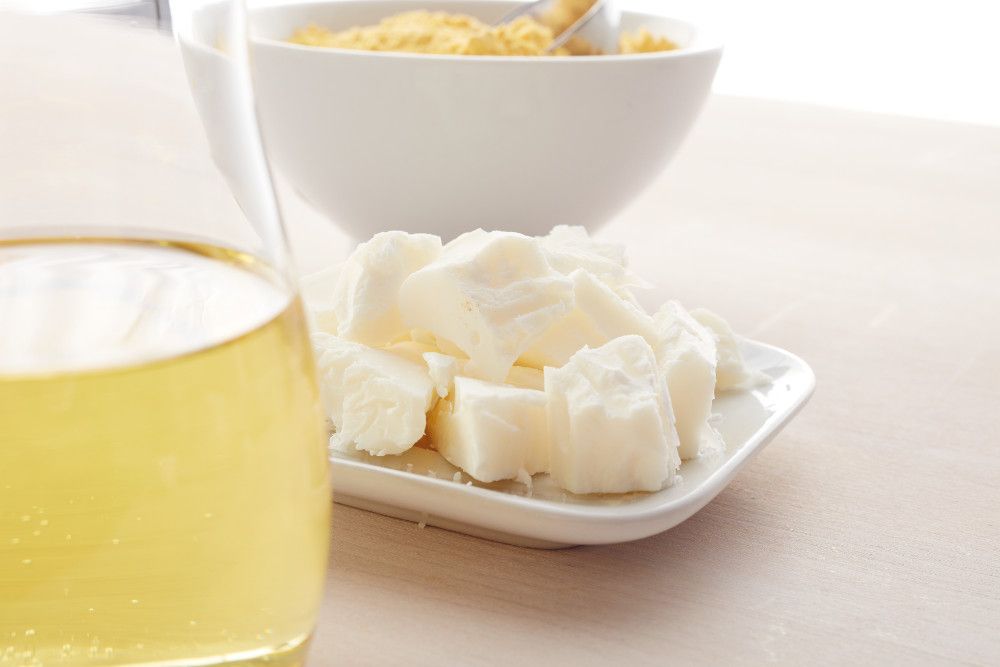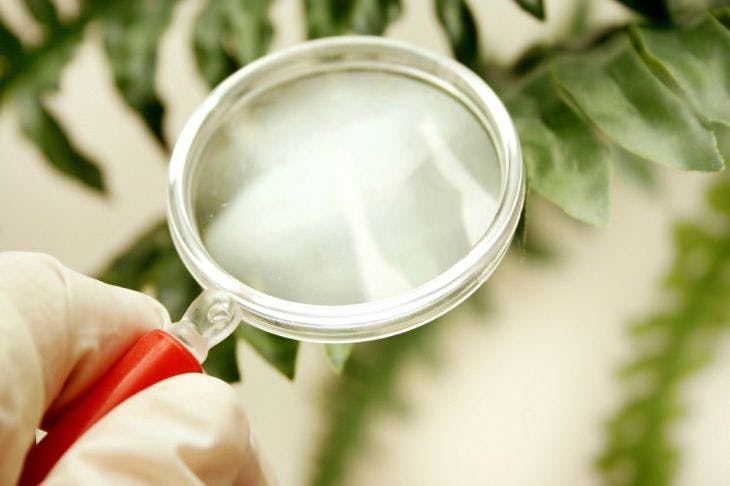Algae Is a Versatile Ingredient for Food, Beverages, and Supplements
Algae’s flexibility as a functional-food and -beverage ingredient, a food additive, and a supplement ingredient makes it remarkably versatile.
Image courtesy of Corbion

Depending on where you live and your life experiences, the word algae might conjure images of jewel-green, goopy ponds; tangled, brown coastal seaweed; or deep-red coral reefs. If you are a follower of nutrition trends or environmental-sustainability efforts, however, you might also regard algae as an ingredient whose time has come: an abundant, plant-based, sustainably produced and harvested food and supplement source with the potential to feed and nourish the masses.
Algae 101
First, an overview of algae’s characteristics, its many forms, and its place in the world ecosystem. Algae are simple, nonflowering plants of a large group that includes seaweed and many single-celled forms. These plants contain chlorophyll and other pigments for performing photosynthesis, but structurally, they lack roots, stems, leaves, or vascular tissue. In nature, algae tend to be found in or near both salt water and fresh water, and they range from one cell in size, such as planktonic algae in freshwater ponds, to enormous, sprawling multicellular organisms, such as giant kelp. The plant’s color ranges from bright green to gold to brown to red.
Historically, certain varieties of algae have been consumed as whole foods mainly in Asian countries, such as Japan, which processes various seaweeds (including nori, wakame, hijiki, and konbu) into snacks, side dishes, and garnishes. Some European cultures have a tradition of eating algae as well, such as in Norway, France, and Ireland. In the United States, however, algae consumption has generally stayed far out of the mainstream-but that is changing, now that the plant is being recognized for its versatility and value as a food additive, a supplement ingredient, a functional-food and -beverage ingredient, and a superfood.
Nourishing a Growing Global Population with…Algae?
Among algae’s many advantages, according to its champions, is its potential as an abundant source of vital nutrients. “As the world struggles with feeding an increasing population in a sustainable manner,” says Bob Capelli, EVP global marketing for AlgaeHealth (Irvine, CA), a division of BGG, “algae looks to be one viable solution. And the variety of algae that can be grown runs the full gamut from protein-rich superfoods like spirulina to concentrated supernutrients like astaxanthin.”
Tryggvi Stefánsson, science manager for Algalif (Reykjanesbaer, Iceland), even refers to algae as “a dream nutritional ingredient.” For starters, he says, it’s a protein source more consumer-friendly than other alternative protein sources, such as insects. It’s also a source of “high-value functional compounds” for human nutrition, such as astaxanthin, beta-carotene, phycocyanin, and the omega-3 fatty acids EPA and DHA. Stefánsson also points to algae’s high production yield, because, unlike conventional crops, it requires very little to be kept alive. Furthermore, he says, algae poses no competition to agriculture because it doesn’t need fertile land.
Walter Rakitsky, emerging business lead, algae ingredients, Corbion (Lenexa, KS), calls algae “earth’s original superfood,” citing its macronutrients, micronutrients, fiber, and healthy fats. “Our AlgaVia and AlgaWise algae ingredients can really transform the foods we eat in terms of nutrition, sustainability, taste, texture, and flavor,” he says.
Versatility, Value, Innovation
Algae’s flexibility as a functional-food and -beverage ingredient, a food additive, and a supplement ingredient makes it remarkably versatile. Algaia (Paris), for instance, markets two algae-based ingredients (or “alginates”), brand-named Satialgine and Algogel, for food, beverage, cosmetics, and a few nutraceutical applications. For foods that retail in North America in particular, says Algaia CEO Fabrice Bohin, applications of these two products are wide-ranging and mainly geared toward improving food texture and replacing fats. They include bakery items, convenience foods, sauces, processed cheeses, vegan foods, low-fat spreads, and ice creams. Encapsulation of these alginates and processing them into edible films are also emerging uses, Bohin says. In total, Algaia’s alginates are found in more than 60 unique commercial products.
AlgaeHealth’s Capelli, whose company specializes in astaxanthin, an algae derivative, says that most of AlgaeHealth’s current business is with supplement companies. (The company supplies the astaxanthin ingredients AstaZine, FucoMax, and ThinOgen to supplement brands, and, according to Capelli, is “always working on” its next algae-based ingredient.) “But,” Capelli says, “we see the food and beverage segment as ready to explode. There are already astaxanthin chocolates, energy bars, drinks, and even astaxanthin ‘eggs,’ and these products are beginning to be accepted by consumers.”
AstaReal’s (Burlington, NJ) Karen A. Hecht, PhD, scientific affairs manager, explains that her company’s astaxanthin’s oleoresin is also suitable for a wide variety of applications, including softgels, liquid capsules, chocolate, gummies, baked goods, and protein shakes. For incorporating astaxanthin oleoresin into more aqueous products, the company developed a water-soluble powder. “AstaReal cold-water-soluble 2.5% astaxanthin powder has excellent stability and dispersion characteristics for incorporation into instant drinks for numerous applications,” Hecht explains, “including sport and beauty.” For RTD beverages, the company developed a liquid astaxanthin emulsion that also works well for shots, water enhancers, and candies.
While astaxanthin is perhaps the best-known algae-based ingredient in North America and is regarded as a potent antioxidant associated with inflammation reduction, membrane preservation, and cardiovascular health, other algae derivatives offer potential wide-ranging wellness benefits as well. In September of last year, for instance, Kemin (Des Moines, IA) launched two proprietary algae-sourced ingredients for its BetaVia product line: BetaVia Pure and BetaVia Complete. Both are derived from a strain of Euglena gracilis. BetaVia Pure consists of greater than 95% algae-derived beta-glucans, which the company says is the highest purity of beta-glucan currently available on the market. BetaVia Complete is a nutrient-dense, dried whole-algae fermentate comprising greater than 50% beta-glucans. The two ingredients are being marketed for immune health to both functional-food and -beverage customers and the global supplements industry.
To expand the market for its lipid-rich and protein-rich whole-microalgae ingredients, branded as AlgaVia, Corbion is working with “leading food companies and sustainable food innovators in the U.S., Europe, and South America on new projects…including savory snacks, salad dressings, cereals, cheese analogs, cookies, coatings, cooking sauces, yogurts, and ready-to-mix supplements.” With its commercialization partner, Bunge Ltd. (White Plains, NY), the company even has a launch planned of AlgaeButter, a “palm-free, non-hydrogenated, vegan solution for bakery, spreads, and confectionery applications,” Rakitsky adds.
Sustainable, Low-Footprint Production Is Possible
Among the many characteristics that make algae a plant-based food of high interest is its ability to be produced in a sustainable and energy-conscious way. “Growing algae is one of the most sustainable and environmentally friendly means of delivering nutrition to people and animals,” says AlgaeHealth’s Bob Capelli. Capelli says that AlgaeHealth and its parent company, BGG, invest 5% of their revenues into R&D, which is “a big number,” he says, “and it has allowed us to make some breakthrough improvements to our farm, our growing and processing methods, and ultimately, our product.” The company was, Capelli asserts, the first in the world to produce certified-organic astaxanthin, for instance.
Iceland-based Algalif is another algae supplier putting sustainability and environmental stewardship at the fore. Simon Seward, Algalif’s global business director, explains, “We make use of the purest water and renewable energy to produce our premium astaxanthin, branded as Astalif. One-hundred percent of our manufacturing facility is powered by geothermal energy.” The company also uses a specialized, proprietary lighting system that reduces overall energy consumption by 50% in addition to providing for optimal microalgae growth, productivity, and yield. Water consumption is tightly controlled, with production methods that allow for 0% evaporation, Seward says. “Algalif doesn’t have to cool, heat, or move water during our production process, allowing us to conserve water and energy” in its custom-built 50,000-sq-ft facility.
Algaia, the producer of Satialgine and Algogel, is aiming to continuously improve its production processes to reduce environmental impact via carbon-dioxide emissions, waste production, and less chemical use, CEO Bohin shares. The company mostly processes fresh brown seaweed harvested from the French Iroise Sea located 12 miles away from the plant and extracts its “valuable actives” using ISO- and FSSC-certified processes. “A strong relationship with local government and environmental agencies is critical for better management of the available pool of brown seaweed,” he says.
Algae’s Appeal
Last June, Nutritional Outlook’s editor, Jennifer Grebow, wrote that algae’s appeal “has everything to do with how algae addresses today’s demands for plant-based, sustainable ingredients,” and her assertion remains true. The plant can and will attract widespread interest from whole swaths of consumers: vegans/vegetarians/flexitarians, “clean” eaters, informed label-readers, those who are ecologically minded, and others. What’s more, formulators and brands can invest in algae and algae derivatives and have available to them an ingredient with extensive and still-uncharted health and wellness benefits, as well as extreme versatility for improving foods, beverages, and supplements.
As pointed out by Kemin’s technical services associate for BetaVia ingredients, Chris Sadewasser, and its product manager, Josh Swalla, “The use of many varieties of algae provides an interesting solution for different products in a wide range of markets. For the dietary-supplement and functional-food market, consumers are becoming more aware of the nutritional benefits of algae, especially in the U.S. where it has not been a usual part of the diet. There is growing consumer demand for naturally sourced, nutrient-dense ingredients in food and dietary supplements, and manufacturers are starting to recognize algae as a better option for meeting this demand.”
Maureen Kingsley is a freelance writer, editor, and proofreader based in Los Angeles. She covers a variety of industries, including medical technology, food-ingredient manufacturing, and cinematography.
Also read:
Algae Ingredients Turn Heads in Food and Drinks

Prinova acquires Aplinova to further increase its footprint in Latin America
April 7th 2025Prinova has recently announced the acquisition of Brazilian ingredients distributor Aplinova, which is a provider of specialty ingredients for a range of market segments that include food, beverage, supplements, and personal care.

























